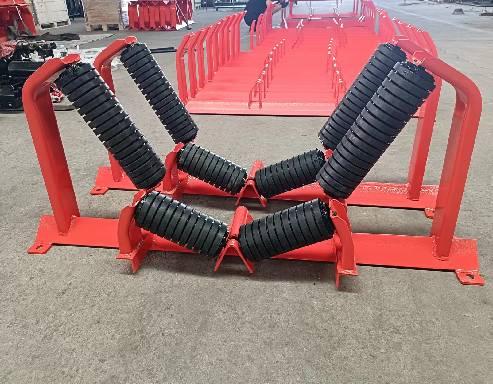 Afrikaans
Afrikaans  Albanian
Albanian  Amharic
Amharic  Arabic
Arabic  Armenian
Armenian  Azerbaijani
Azerbaijani  Basque
Basque  Belarusian
Belarusian  Bengali
Bengali  Bosnian
Bosnian  Bulgarian
Bulgarian  Catalan
Catalan  Cebuano
Cebuano  Corsican
Corsican  Croatian
Croatian  Czech
Czech  Danish
Danish  Dutch
Dutch  English
English  Esperanto
Esperanto  Estonian
Estonian  Finnish
Finnish  French
French  Frisian
Frisian  Galician
Galician  Georgian
Georgian  German
German  Greek
Greek  Gujarati
Gujarati  Haitian Creole
Haitian Creole  hausa
hausa  hawaiian
hawaiian  Hebrew
Hebrew  Hindi
Hindi  Miao
Miao  Hungarian
Hungarian  Icelandic
Icelandic  igbo
igbo  Indonesian
Indonesian  irish
irish  Italian
Italian  Japanese
Japanese  Javanese
Javanese  Kannada
Kannada  kazakh
kazakh  Khmer
Khmer  Rwandese
Rwandese  Korean
Korean  Kurdish
Kurdish  Kyrgyz
Kyrgyz  Lao
Lao  Latin
Latin  Latvian
Latvian  Lithuanian
Lithuanian  Luxembourgish
Luxembourgish  Macedonian
Macedonian  Malgashi
Malgashi  Malay
Malay  Malayalam
Malayalam  Maltese
Maltese  Maori
Maori  Marathi
Marathi  Mongolian
Mongolian  Myanmar
Myanmar  Nepali
Nepali  Norwegian
Norwegian  Norwegian
Norwegian  Occitan
Occitan  Pashto
Pashto  Persian
Persian  Polish
Polish  Portuguese
Portuguese  Punjabi
Punjabi  Romanian
Romanian  Russian
Russian  Samoan
Samoan  Scottish Gaelic
Scottish Gaelic  Serbian
Serbian  Sesotho
Sesotho  Shona
Shona  Sindhi
Sindhi  Sinhala
Sinhala  Slovak
Slovak  Slovenian
Slovenian  Somali
Somali  Spanish
Spanish  Sundanese
Sundanese  Swahili
Swahili  Swedish
Swedish  Tagalog
Tagalog  Tajik
Tajik  Tamil
Tamil  Tatar
Tatar  Telugu
Telugu  Thai
Thai  Turkish
Turkish  Turkmen
Turkmen  Ukrainian
Ukrainian  Urdu
Urdu  Uighur
Uighur  Uzbek
Uzbek  Vietnamese
Vietnamese  Welsh
Welsh  Bantu
Bantu  Yiddish
Yiddish  Yoruba
Yoruba  Zulu
Zulu drum pulley lagging
Understanding Drum Pulley Lagging Importance and Applications
Drum pulley lagging is an essential component in various industries that utilize conveyor belts for material handling. Lagging refers to the process of covering the surface of a drum pulley with a material that enhances its performance and durability. This article explores the significance of drum pulley lagging, the materials used, its benefits, and its applications.
At its core, the primary purpose of lagging is to improve the traction between the drum pulley and the conveyor belt. By providing a textured surface, lagging helps to prevent slippage, which can reduce the efficiency of the conveyor system and lead to increased wear and tear on both the pulley and the belt. This is particularly crucial in applications such as mining, quarrying, and manufacturing, where heavy materials are transported, and maintaining a secure grip is vital for safety and operational efficiency.
Common materials used for lagging include rubber, ceramic, and polyurethane, each with unique properties tailored to specific operational needs. Rubber lagging is popular due to its excellent friction characteristics and resistance to abrasion. Ceramic lagging, on the other hand, offers enhanced durability and is particularly effective in high-impact environments, making it suitable for heavy-duty applications. Polyurethane lagging provides a balance between flexibility and wear resistance, making it versatile for various settings.
drum pulley lagging

The benefits of properly installed lagging are numerous. First and foremost, it significantly extends the lifespan of both the drum pulley and the conveyor belt, leading to reduced maintenance costs. Secondly, effective lagging enhances the overall efficiency of the conveyor system, minimizing downtime caused by slippage and operational disruptions. Moreover, it contributes to improved safety by reducing the risk of accidents resulting from belt slippage or failure.
In practice, drum pulley lagging has applications across numerous sectors. In the mining industry, it is critical for ensuring that heavy ore and materials are transported effectively and safely. In manufacturing plants, lagging assists in maintaining production flow by providing reliable movement of goods. Additionally, in the agricultural sector, it aids in the efficient transfer of products, thereby supporting supply chain effectiveness.
In conclusion, drum pulley lagging plays a pivotal role in the performance and longevity of conveyor systems across various industries. By understanding the types of materials used and their specific benefits, businesses can make informed decisions to enhance their operational efficiency and safety, ultimately leading to greater productivity and profitability. As technology advances, we can expect innovations in lagging materials and techniques, further improving the reliability of these essential systems.
-
Revolutionizing Conveyor Reliability with Advanced Rubber Lagging PulleysNewsJul.22,2025
-
Powering Precision and Durability with Expert Manufacturers of Conveyor ComponentsNewsJul.22,2025
-
Optimizing Conveyor Systems with Advanced Conveyor AccessoriesNewsJul.22,2025
-
Maximize Conveyor Efficiency with Quality Conveyor Idler PulleysNewsJul.22,2025
-
Future-Proof Your Conveyor System with High-Performance Polyurethane RollerNewsJul.22,2025
-
Driving Efficiency Forward with Quality Idlers and RollersNewsJul.22,2025





























